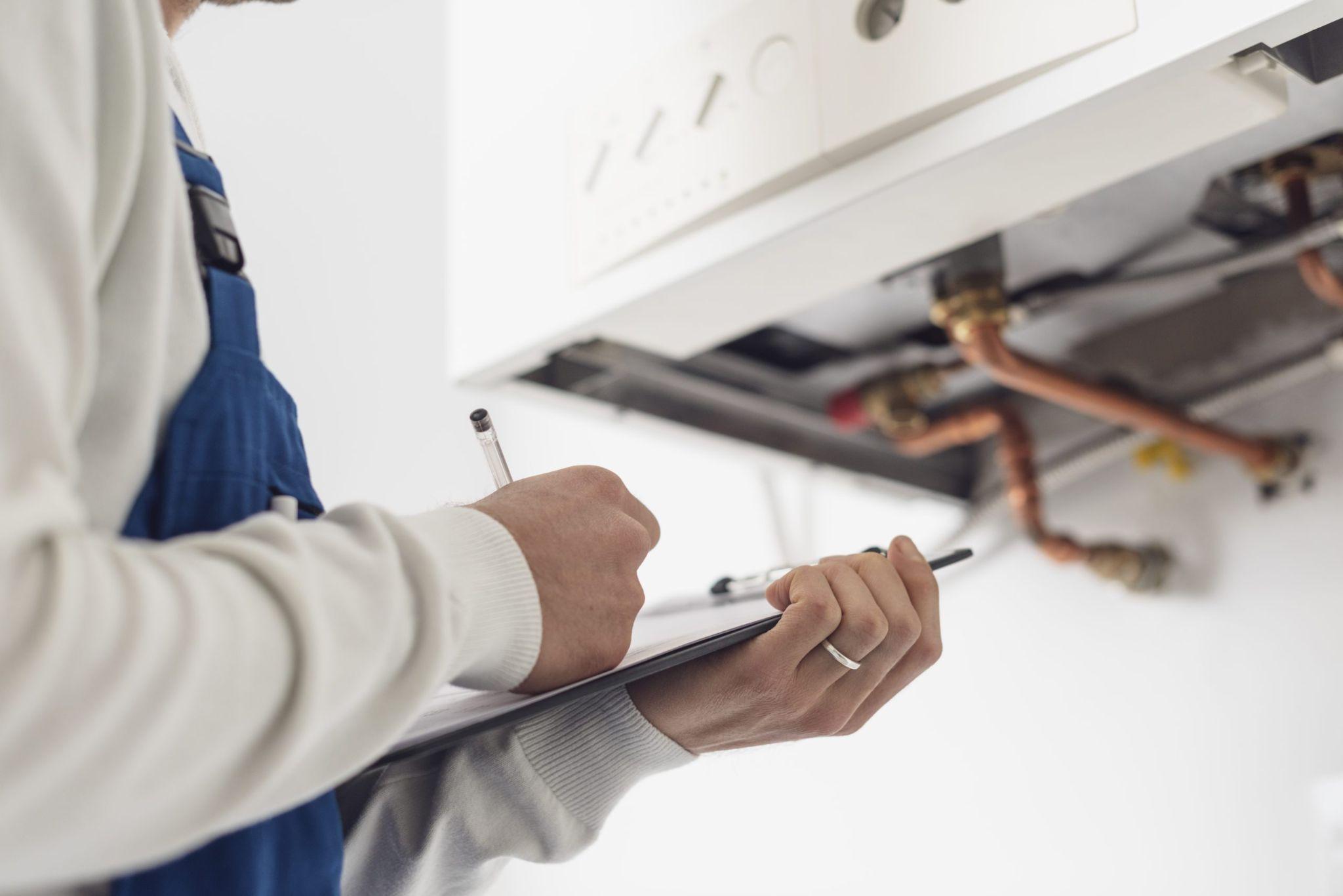Learning
Which Social Media Platforms are Best for Artists and Designers?

Social media platforms are used for many purposes for fun and business but did you know there also great for artists and designers. They have opened horizons for many businesses that remained in the shadow. But now, a hobby can turn out to be a great help in promoting your creations. Also, artists have gained an opportunity to share their skills and make money from that.
Social media is a treasure for digital artists as it makes the process of promoting your works and becoming an influencer in this niche easier and less expensive. By now, the industry of digital painting, in particular, has reached huge popularity and continues to grow.
Designers of different kinds are having their best time to work as well. All that is possible because social platforms are much cheaper than traditional methods of advertising. It has its own rules and methods, for example, for an additional boost on Instagram, to buy Instagram views you can use Socialsgrow.com). And there are more ways for businesses, influencers, artists and designers to grow their branding.
In this article, we shall talk about the best platforms for artists and designers.
Social Media Platform Instagram

Digital artwork by Ilya Kuvshinov, an artist based in Tokyo
This is one of the best networks to grow a clientele and fan base for an artist. Instagram has many advantages for that matter. First of all, Instagram is a visual platform. Even though there is a possibility to write quite long texts, images rule this network. Thus, it is a perfect place to showcase your art.
Through the latest years, Instagram has formed a strong community of artists and their fans, who support each other within the platform. Also, the promotion on this platform is simple to understand. Practically any strategy can be put in motion without involving a team of marketers to your aid. Here are some useful tips for growth on Instagram:
- Make your flow of work regular, so you have a basic minimum to upload on the platform.
- Focus on what you do best and push it. According to the latest tendencies on Insta, share some video content – process or mini tutorial. Your goal is to get as many Instagram views as you can and get your works noticed on the Explore section.
- Get in touch with other artists that have a similar style. One of the trends in this community is to cross-promote others in order to expand their influence. Use hashtag #artistssupportartists on Instagram – it can make wonders.
- Upload a lot. You can dilute your profile with sketches, works in progress, and ideas that you want to complete.

Artwork by Hannah Alexander, based in the UK
Hint: If you are having trouble with producing original content, like an art block, there is a solution that is specific to Instagram. One of the most popular hashtags in the art community is #drawthisinyourstyle. Sometimes it is a contest held by famous artists, sometimes it is made for fun, but the point is that you have to redraw the original artwork the way you see it.
Usually, authors share the pieces that they like most, and some of them repost all the pieces. So this is another way to gain some ratings on Instagram.
The same rules work for designers as well. Interior, web, graphics, game dev – all these types of designs are welcome on Instagram. This is a universal gallery, which will sell your services fast.
Behance for digital artists

Behance is also one of the most suitable networks for digital artists. This platform is developed and maintained by Adobe corporation. The network can be described as a digital portfolio, where artists share their works. Some people call in LinkedIn for designers.
The photos that are uploaded to Behance, can be united into projects. Usually, a project is a series of artwork that was ordered by the same customer, or that is made in the same technique and theme.
There is also a possibility to add credits to the projects – who ordered it, what is the idea, and the name of the project. On Behance you can contact your potential customers through the messaging system, so the contracts can be made within the network.
Unlike Instagram, Behance is focused primarily on the digital art industry – photography, retouch, illustration, graphic design, conceptual arts for games, and so on. Being more specific, this platform suits more for illustrators, designers, and artists, who are looking for clientele rather than a fan base.
Many significant companies, like Blizzard, Activision, WeTransfer, and magazines like Vogue, Elle, Life, etc. are using this platform as a marketplace of specialists for their projects. So the most useful advice to have for this platform is – upload more content (only the best tho), and always look for more famous and productive companies to offer your services.
Social Platform YouTube

Surprised, huh? This social platform has its own specifics, yet it is highly effective for artists and designers. There are three main directions for the artist to develop on YouTube, and here they are:
- TUTORING. Many artists are using YouTube to upload their lessons. YouTube has a comfortable system of communication and many features that help to make the tutorial easy to perceive by viewers.
- TIMELAPSE. This type of content can be considered as relaxing and entertaining rather than educational. It speeds up the recording of a creating process, sometimes with text explanations. Usually, there is no narrative, but music is often added. Timelapses are a demonstration of skill that is targeted to impress the potential employer, so most of all it is produced by game dev specialists, like concept artists, landscape or character designers, and 3D authors.
- ARTIST LIFESTYLE. This type of content is the most popular among artists, as it includes the previous types, and adds some space for a bigger audience to attract. YouTube, with its monetization, is good additional revenue. So basically the artist uses the platform not only to promote his works but to become an influencer in the industry. In such blogs you can see all the popular genres of content: unboxing, tutorials, product reviews, Q&A, travels, daily vlogs, etc., and all those are highlighting art supplies or processes.
Patreon special for artists

This platform is very special for artists because it actually helps a lot to turn a hobby into a business. Basically, Patreon is a place for donations on a monthly basis. Artist has to fill in his profile page and offer special tiers for his donors, who are called patrons here.
Usually, it is exclusive content and special offers that are available only to patrons. The platform allows you to create posts that will be visible only to the members of your community who paid for a certain tier. Also, you can set goals – the sum that you need to reach. This network is a great support to many designers and illustrators who make money only by creating their artwork. So it is highly recommended to have an account on Patreon when you gain some fans of your work.
The final word
The best thing that an artist can make, is to be present on different platforms, along with the ones that are described above. Tumblr, Pinterest, Twitter… A whole lot of them. But whatever one you choose to be your home field. You should remember that cross-platform promotion is what you have to do. And the more platforms you embrace, the better will be the result.
Learning
First-Time Buyer’s Guide to the UK Property Market

Entering the UK property market as a first-time buyer can feel both exciting and daunting. The process is filled with potential pitfalls and complex decisions, but with the right guidance, it can be navigated smoothly. The estate agents in Yorkshire demystify the journey from the initial decision to buy a home to the moment you step over the threshold of your new property.
Understanding Your Financial Position
The first and perhaps most crucial step in the home-buying process is understanding your financial situation. This includes assessing your savings, income, and current debts. Here’s how you can prepare:
1. Deposit: Generally, you’ll need at least 5% of the property price as a deposit, though aiming for 10% or more can provide better mortgage rates.
2. Income and Expenses: Use a budget planner to assess your monthly income against your expenses. This will help you understand how much you can afford in monthly mortgage repayments.
3. Credit Score: Lenders will evaluate your credit score to determine your mortgage eligibility. So it’s important to have a good credit score, and you should work on it if required.
4. Mortgage Options: Speak to a mortgage advisor to understand different types of mortgages, such as fixed-rate, variable-rate, and help-to-buy schemes.
Getting a Mortgage Agreement in Principle
A Mortgage Agreement in Principle (AIP) is a statement from a lender indicating how much they’ll likely lend you. You will be a more attractive buyer with an AIP as it shows sellers you’re serious and financially prepared.
Deciding What You Want
Before you start viewing properties, it’s essential to know what you’re looking for. Consider the following factors:
1. Location: Proximity to work, schools, public transport, and amenities are key. Research neighbourhoods to find the best fit for your lifestyle.
2. Property Type: Decide whether you want a flat, terraced house, semi-detached, or detached property. Each has its pros and cons.
3. Must-Haves: Make a list of non-negotiables, such as the number of bedrooms, garden size, and parking facilities.
4. Future Proofing: Consider your future needs. Are you planning to start a family? Do you need space for a home office?
Starting the Property Search
With a clear idea of what you’re looking for, you can begin your property search. Here are some tips:
1. Use Online Portals: Websites like Rightmove, Zoopla, and OnTheMarket are excellent starting points. Set up alerts to get notified of new listings that meet your criteria.
2. Visit Estate Agents: Register with local estate agents who can provide insights into the market and inform you of new properties before they’re listed online.
3. Attend Viewings: Don’t rush this part. Visit several properties to get a feel for what’s available in your price range.
Making an Offer
Once you find a property you love, it’s time to make an offer. Here’s how to approach it:
1. Research: Check the selling prices of similar properties in the area to gauge a fair offer.
2. Negotiate: Don’t be afraid to negotiate. The starting point is most usually the asking price.
3. Conditions: You might include conditions in your offer, such as the inclusion of certain fixtures or a specific moving date.
The Legal Process
If your offer is accepted, the legal process begins. You’ll need a solicitor or licensed conveyancer to handle the legalities. Here’s what to expect:
1. Conveyancing: This is the legal transfer of property ownership. Your solicitor will handle this, including conducting searches, dealing with the Land Registry, and transferring the funds.
2. Surveys and Inspections: Arrange for a property survey to check for structural issues. There are different types of surveys, from basic condition reports to full structural surveys.
3. Mortgage Finalisation: Once the survey is complete and satisfactory, your mortgage can be finalised.
4. Exchange of Contracts: This is when the sale becomes legally binding. You’ll pay your deposit at this stage.
5. Completion: On the agreed completion date, the remaining money is transferred, and you receive the keys to your new home.
Moving In
Moving day can be hectic, but planning can ease the stress:
1. Hire a Removal Company: Book a reliable removal company well in advance. Discover the best deals by getting quotes from multiple companies.
2. Pack Strategically: Label your boxes by room and keep essential items accessible.
3. Notify Utilities and Change Address: Inform your utility providers of your move date and update your address with banks, the DVLA, and other important institutions.
Settling In
Get settled. Introduce yourself to the neighbours, familiarise yourself with the local area, and really start to make the place your own.
Here are a few final tips:
1. Safety Checks: Make sure that your smoke alarms and carbon monoxide detectors are working, and make sure that you know where the gas and electricity meters are located.
2. Maintenance Plan: Keep a record of the smooth functioning of your new home with a maintenance schedule, complete with regular checks and seasonal tasks.
3. Personal Touches: Add personal touches to make the space feel like home. This can be from putting up family photos or redoing the decoration in your rooms.
Conclusion
Buying your very first home in the UK is most definitely a milestone, difficult and full of challenges but rewarding in the end. Such a philosophy guides you in understanding finances and knowing what you want to achieve from detailed research, and seeking professional advice that confidently helps you navigate the property market. Yes, the journey may have its hurdles, but in the end—owning your own home—the reward will be worth the effort. Welcome to your new chapter!
SEE ALSO: Conquer the Chaos: Hacks to Clean Your Home in Half the Time
Learning
5 Health Benefits of Regular Pedicures

There’s nothing quite like a pedicure to keep your feet looking and feeling their best, but did you know that pedicures do more than simply enhance the appearance of your feet? Many people don’t realize that regular pedicures can come with a wide range of health benefits that can promote the well-being of your feet, so here are some ways that your routine pedicure keeps both your toenails and feet in the best condition possible!
Smoother Skin
One of the biggest misconceptions about pedicures is that they only cater to and look after your toenails. While you’ll definitely be leaving each session with a fresh coat of nail polish, your pedicure can also do wonders for the health of your skin. Aside from trimming and shaping your nails and cuticles, you’ll notice that your nail technician also dedicates a few steps to the skin of your feet.
After inspecting your feet and looking for any issues or imperfections that may need to be addressed, your technician will work on an exfoliating scrub to remove any dead skin cells. This step may also be aided by a foot file, which can be used to buff away any calluses and other problem areas manually.
Softer Skin
After your nail technician addresses all the problem areas of your feet and removes any unwanted dead skin cells, he or she will often massage in a moisturizing product, such as lotion, cream, or butter, to ensure that your skin is properly moisturized. These products contain skin-loving ingredients that will ensure that your feet have everything they need to look and feel their best so that you can walk out of your pedicure with a renewed sense of confidence.
Healthier Nails
After your pedicure session, your nails will not only look better due to the fresh coat of nail polish, but they’ll also be healthier and stronger. This is because your nail technician takes their time to ensure that your nails are properly looked after through steps that include deep cleaning, nail trimming, nail filing, and cuticle care. All of these things work together to prevent issues like ingrown nails from occurring, all the while improving the appearance of your nails.
Increased Blood Circulation
While the specific steps included in your pedicure will depend on the beauty salon, most pedicures will have a massage step somewhere in the mix. One of the often overlooked benefits of these massages is the increased blood circulation, which can deliver more nutrients and oxygen to your feet and nails, promoting their health and appearance. Aside from that, better blood flow means reduced tension and soreness, as well as better distributed heat throughout your body.
Reduced Infections
A significant amount of dirt and bacteria can build up on your feet without you even realizing it, but pedicures can be a great way to prevent these from happening in the first place. The exfoliation step of a pedicure removes dead skin cells as well as all the debris that may have accumulated underneath, and the deep cleaning of your toenails and cuticles also gets rid of any impurities that may have slipped beneath them, which can stop infections from happening.
These are some of the many health benefits that you can look forward to at your next pedicure appointment. However, it’s worth noting that you need to book regular sessions to truly reap all the rewards. This can be difficult, especially when you don’t feel like driving to your nearest nail salon after a long day, but the good news is that you can enjoy the salon experience in the comfort of your own home with a home pedicure service.
Learning
Commercial Boiler Installation Services London

For businesses in the bustling city of London, having a reliable heating system is crucial. Whether you’re opening a new office, expanding your current premises, or simply upgrading an outdated system, commercial boiler installation services for businesses in London are essential to ensure your operations run smoothly and efficiently. Proper installation and maintenance of commercial boilers can make a significant difference in energy efficiency, cost savings, and the overall comfort of your workspace.
The Importance of Professional Installation
When it comes to installing a commercial boiler, professional expertise is paramount. Here’s why:
- Efficiency and Performance: Professional installation ensures that your boiler operates at peak efficiency, reducing energy consumption and lowering utility bills. A well-installed boiler can effectively meet the heating demands of your business without unnecessary energy waste.
- Safety: Commercial boilers are complex systems that require precise installation to operate safely. Professional installers adhere to stringent safety standards and regulations, minimizing the risk of accidents and ensuring the safety of your employees and premises.
- Compliance with Regulations: Commercial properties are subject to various building codes and regulations. Professional installers are well-versed in these requirements and ensure that your boiler system complies with all local laws and standards.
- Longevity and Reliability: Proper installation is critical to the longevity and reliability of your boiler. A professional installation can prevent common issues such as leaks, pressure problems, and system failures, ensuring that your boiler runs smoothly for years to come.
Key Considerations for Commercial Boiler Installation
When planning for a commercial boiler installation, several factors need to be considered:
- Type of Boiler: The type of boiler you choose will depend on your business’s specific needs. Options include gas boilers, oil boilers, and electric boilers, each with its own set of advantages. Consulting with a professional can help you determine the best choice for your business.
- Sizing and Capacity: The boiler’s size and capacity must match the heating demands of your commercial space. An undersized boiler will struggle to meet your needs, while an oversized one will lead to inefficiencies and higher costs.
- Location: The placement of your boiler affects its efficiency and accessibility for maintenance. Professional installers can help you choose the optimal location for your boiler.
- Integration with Existing Systems: If you’re upgrading or replacing an existing boiler, it’s essential to ensure compatibility with your current heating system. Professional installers can seamlessly integrate the new boiler with your existing setup.
Choosing the Right Installation Service

Selecting the right installation service provider is crucial to the success of your boiler installation project. Consider the following when making your choice:
- Experience and Expertise: Look for a provider with a proven track record in commercial boiler installations. Experienced installers can handle the complexities of commercial systems and provide high-quality workmanship.
- Reputation: Check reviews and testimonials from previous clients to gauge the provider’s reliability and customer satisfaction.
- Comprehensive Services: Choose a provider that offers a full range of services, including installation, maintenance, and repair. This ensures that all your boiler needs are met by a single, trusted source.
In London, ROWLEN is a reputable name known for delivering top-notch commercial boiler installation services. Their team of experts is dedicated to providing efficient, safe, and compliant installations tailored to the unique needs of businesses.
Conclusion
Investing in professional commercial boiler installation services for businesses in London is essential for ensuring efficiency, safety, and long-term reliability. By choosing an experienced and reputable service provider like ROWLEN, you can rest assured that your heating system will be installed correctly and maintained to the highest standards. Proper installation not only enhances the performance of your boiler but also contributes to the overall comfort and productivity of your business environment.
SEE ALSO:
-

 News3 years ago
News3 years agoLet’s Know About Ultra High Net Worth Individual
-
Entertainment2 years ago
Mabelle Prior: The Voice of Hope, Resilience, and Diversity Inspiring Generations
-

 Health3 years ago
Health3 years agoHow Much Ivermectin Should You Take?
-

 Tech2 years ago
Tech2 years agoTop Forex Brokers of 2023: Reviews and Analysis for Successful Trading
-

 Lifestyles2 years ago
Lifestyles2 years agoAries Soulmate Signs
-

 Movies2 years ago
Movies2 years agoWhat Should I Do If Disney Plus Keeps Logging Me Out of TV?
-

 Health3 years ago
Health3 years agoCan I Buy Ivermectin Without A Prescription in the USA?
-

 Learning2 years ago
Learning2 years agoVirtual Numbers: What Are They For?
